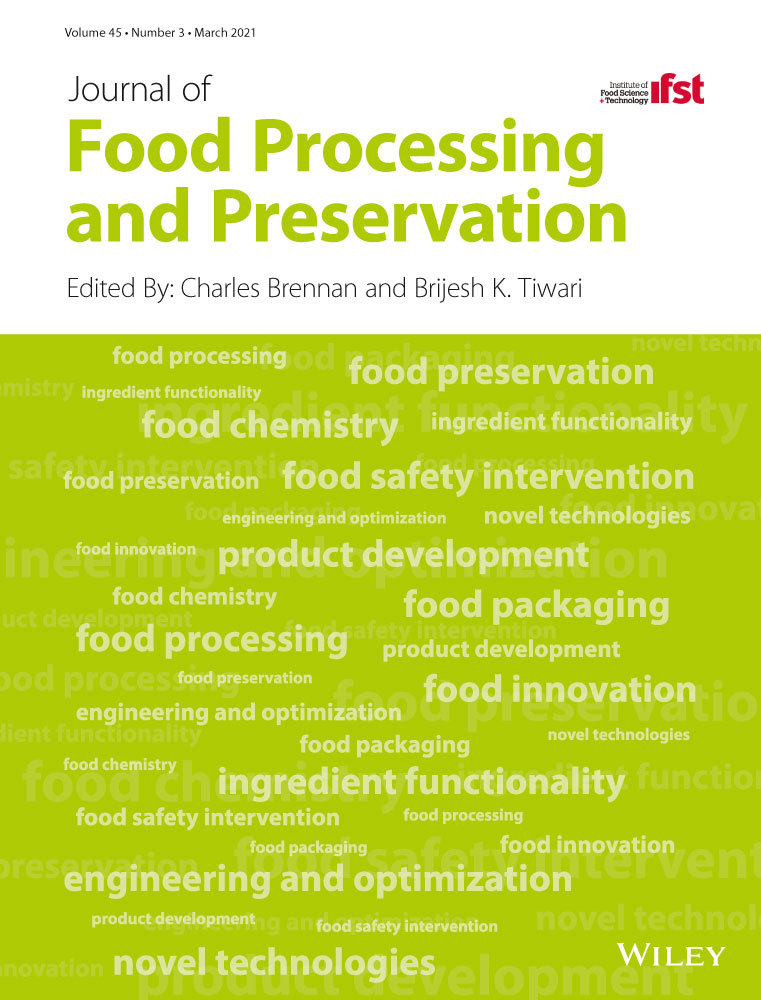Ver ítem
- xmlui.general.dspace_homeCentros e Institutos de InvestigaciónCIA. Centro de Investigaciones de AgroindustriaInstituto de Tecnología de AlimentosArtículos científicosxmlui.ArtifactBrowser.ItemViewer.trail
- Inicio
- Centros e Institutos de Investigación
- CIA. Centro de Investigaciones de Agroindustria
- Instituto de Tecnología de Alimentos
- Artículos científicos
- Ver ítem
Evaluation of PMA‐qPCR methodology to detect and quantify viable Shiga toxin‐producing Escherichia coli in beef burgers
Resumen
Propidium monoazide (PMA) is a selective nucleic acid intercalating dye that can be combined with real‐time PCR (qPCR) in order to evaluate cell viability in food samples. The aim of the present work was to evaluate PMA‐qPCR to detect and quantify viable STEC cells in beef burgers using stx2 as target gene. First, it was determined that 100 µM of PMA could inhibit qPCR signal from non‐viable cells and had no influence on the amplification of different
[ver mas...]
Propidium monoazide (PMA) is a selective nucleic acid intercalating dye that can be combined with real‐time PCR (qPCR) in order to evaluate cell viability in food samples. The aim of the present work was to evaluate PMA‐qPCR to detect and quantify viable STEC cells in beef burgers using stx2 as target gene. First, it was determined that 100 µM of PMA could inhibit qPCR signal from non‐viable cells and had no influence on the amplification of different concentrations of viable cells. Then, it was shown that PMA efficiently distinguished between different log cfu of viable cells in presence of a high concentration of non‐viable cells, both in culture and in beef burger homogenates. Finally, it was determined that PMA could distinguish between viable and non‐viable cells within the same log cfu in beef burger homogenates. PMA‐qPCR effectively detected and quantified viable STEC cells in culture and in beef burger homogenates.
[Cerrar]

Fuente
Journal Food Processing and Preservation 45 (3) : e15338 (2021)
Fecha
2021-02-06
ISSN
1745-4549
Documentos Relacionados
Formato
pdf
Tipo de documento
artículo
Proyectos
(ver más)
INTA/2019-PE-E7-I147-001/2019-PE-E7-I147-001/AR./INOCUIDAD DE ALIMENTOS PARA CONSUMO HUMANO Y ANIMAL
INTA/PNAIyAV-1130042/AR./Herramientas y sistemas para la gestión de la calidad integral.
Palabras Claves
Derechos de acceso
Embargado
 Excepto donde se diga explicitamente, este item se publica bajo la siguiente descripción: Creative Commons Attribution-NonCommercial-ShareAlike 2.5 Unported (CC BY-NC-SA 2.5)
Excepto donde se diga explicitamente, este item se publica bajo la siguiente descripción: Creative Commons Attribution-NonCommercial-ShareAlike 2.5 Unported (CC BY-NC-SA 2.5)

